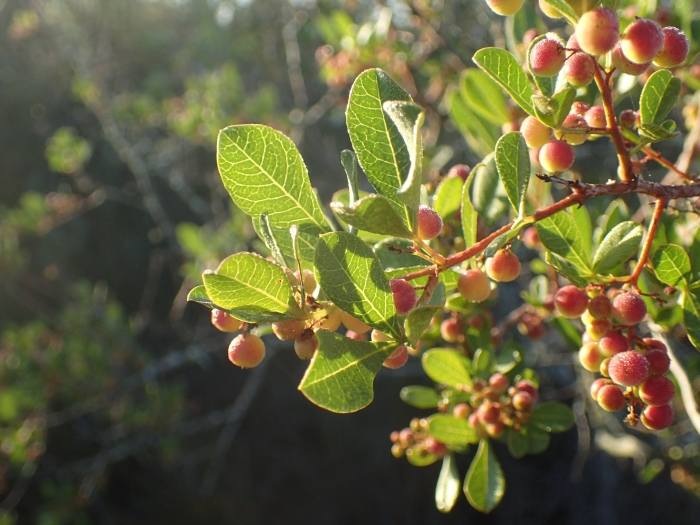Dune Currant Rhus
(Searsia laevigata)
Dune Currant Rhus (Searsia laevigata)
/
/

Mahomed Desai
CC BY 4.0
Image By:
Mahomed Desai
Recorded By:
Copyright:
CC BY 4.0
Copyright Notice:
Photo by: Mahomed Desai | License Type: CC BY 4.0 | License URL: http://creativecommons.org/licenses/by/4.0/ | Rights Holder: Mahomed Desai | Publisher: iNaturalist | Date Created: 2023-03-14T07:18:14-07:00 |

























Estimated Native Range
Summary
Searsia laevigata, commonly known as dune currant rhus, is an evergreen tree or large shrub native to the coastal dunes and rocky slopes of the fynbos biome in South Africa. Unlike Searsia glauca, it has larger leaflets, which are trifoliate, glossy, and dark green. Typically, it grows to a height of 3-5 meters with a similar spread, forming a dense and rounded canopy. The tree produces small, inconspicuous yellow-green flowers in spring, followed by small, fleshy fruits that are enjoyed by birds.
Dune currant rhus is valued for its hardiness in coastal environments, where it can withstand strong winds and salt spray, making it an excellent choice for coastal gardens and restoration projects. It is also used for stabilizing sand dunes due to its robust root system. In cultivation, it requires well-drained soil, tolerates drought once established, and thrives in full sun to partial shade. While it is generally low maintenance, it can be susceptible to scale insects and fungal diseases under certain conditions.CC BY-SA 4.0
Dune currant rhus is valued for its hardiness in coastal environments, where it can withstand strong winds and salt spray, making it an excellent choice for coastal gardens and restoration projects. It is also used for stabilizing sand dunes due to its robust root system. In cultivation, it requires well-drained soil, tolerates drought once established, and thrives in full sun to partial shade. While it is generally low maintenance, it can be susceptible to scale insects and fungal diseases under certain conditions.CC BY-SA 4.0
Plant Description
- Plant Type: Tree, Shrub
- Height: 6-10 feet
- Width: 6-10 feet
- Growth Rate: Moderate
- Flower Color: Green
- Flowering Season: Spring
- Leaf Retention: Evergreen
Growth Requirements
- Sun: Full Sun
- Water: Low
- Drainage: Medium, Fast
Common Uses
Drought Tolerant, Low Maintenance
Natural Habitat
Coastal dunes and rocky slopes of the fynbos biome in South Africa
Other Names
Common Names: Glossy Current, Blinktaaibos, Glossy Taaibos
Scientific Names: , Searsia laevigata, Rhus acuminata, Rhus atomaria, Rhus burmannii, Rhus crassinervia, Rhus eckloniana, Rhus elongata, Rhus hirsuta, Rhus incana
GBIF Accepted Name: